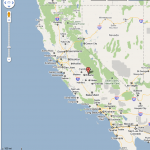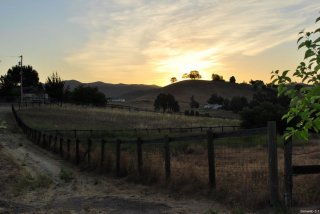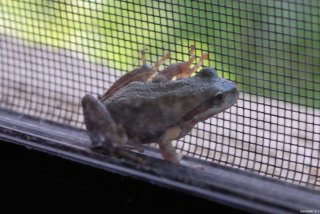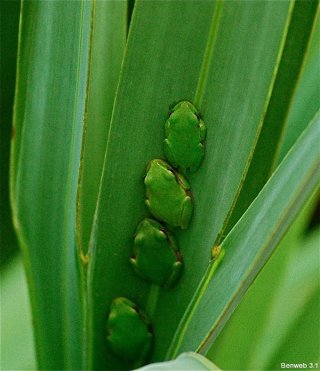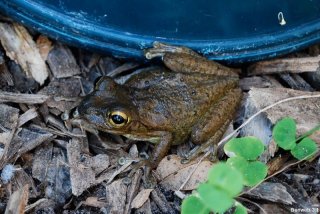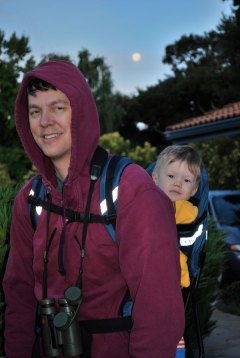There aren’t very strong geologic, climatologic, zoologic or botanic parallels between my two “home” states of Florida and California. True, both states have endemic scrub-jay populations (the Santa Cruz island scrub-jay and the Florida scrub-jay), and many of the plants and animals of Florida’s “ancient islands” (scrub habitat) have western affinities, but beyond that, there’s not a whole lot linking the two places.
Oh, sure, there are some superficial parallels. I mean, when I was going to grad school at UCLA, I rode my bike through palm tree–lined streets, dodging expensive cars, with the sights and sounds of the ocean never too far away from consciousness. Here in south Florida, I ride my bike through, um, palm tree–lined streets, dodging expensive cars, and the sights and sounds of the ocean aren’t too far away. We moved away from California in part because the housing prices had become unaffordable. Now we’re in Florida where, it seems, housing prices had become unaffordable. In both places, it appears to have been a bubble.
Geographically they’re also superficially similar: Both are longer on the north–south axis than they are east–west. California covers close to 800 miles longitudinally and only around 250 in latitude, while Florida is around 450 miles N-S and surprisingly wide–360 miles from Pensacola to the Atlantic coast. Both of them also start out in the upper left and drift across the page to the lower right:
But Florida, surrounded by water on three sides, is only much more recently, and perhaps temporarily, emerged from the ocean. Only those ancient island systems like the Lake Wales ridge date back more than a few thousands of years. California, on the other hand, is millions of years dry.
The water offshore of the two states is remarkably different: the cold California Current keeps the Pacific waters quite chilly, even in summer; the warm Gulfstream, on the other hand, keeps our Florida waters comfortable, even in winter. And presumably, these differences account for a climatologic difference as well. As I’ve mentioned before, the clouds are different: in California, unless you’re in the middle of June gloom (which, as a recent study has indicated, may be fluctuating or even decreasing over time, causing potential problems for California’s signature redwood forests), the clouds are never that close to the ground.
But in Florida, it seems like they’re right smack overhead all the time:
Both states have some interesting herpetofauna. Below, a west coast treefrog, Pseudacris species, which by range I assume to be Sierran treefrog (P. sierra):
And here an east coast group of hylids, Hyla squirella (Squirrel treefrog):
And, since this is basically a backyard nature blog, here’s an introduced species, Osteopilus septentrionalis (Cuban treefrog), from my own (front) yard in Florida:
So, what does all this mean? Yes, two states on opposite sides of the country have clouds that may or may not be the same; flora and fauna that may or may not be the same; people and cities and coasts that may or may not be the same. One has a coldwater current close offshore; the other a warmwater one. So what?
Well, each state has a claim on my affections, and I’m going to make sure my family makes the most of each one:


